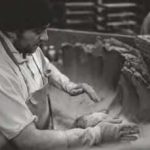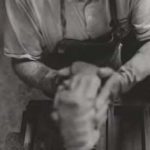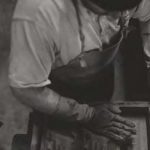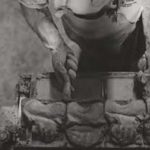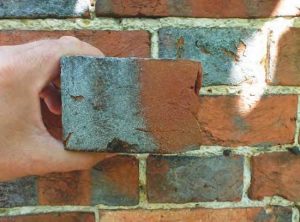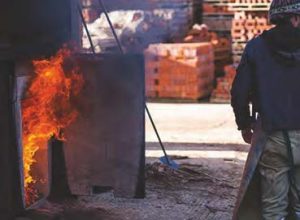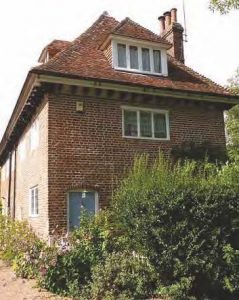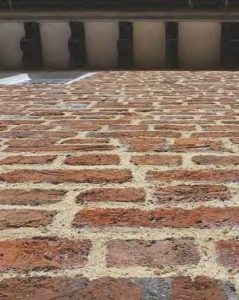Heritage, Hand-made Bricks
The Pluckley Brick Company is committed to reviving the authentic processes of manufacture for both brick and tile.
The Pluckley Brick Company produces handmade wood-fired bricks from Weald clay, dug from the site of the former Pluckley Brickwork; these bricks are a specialist vernacular product ideal for both conservation and new build across the Weald from Kent to East Sussex, West Sussex and South Surrey.
Tim Kemp, Director told us “I have studied vernacular buildings for over 30 years and worked for ten years as an architectural designer at international level. What I have witnessed in that time is the growing conflict between the very positive intentions of individuals to conserve our brick heritage against an increasingly depleted supply of authentic local bricks with which to work.”
Clamps
Clamps have been in use since 4,000 BC and are temporary kilns formed typically by a 10 feet high stack of green (unfired) bricks, set finger width apart, with a series of lateral fire tunnels running along the base (1 tunnel feeds approximately 3,000 bricks and large clamps may burn 100,000 or more bricks at a time) and scoved (plastered) with a clay and sand mixture to keep the heat in.
The firing inefficiencies of this ‘up-draft’ process determine that each brick is authentic and has a unique size, shape, colour and texture; the signature characteristics of these bricks are seen across the south of England in vernacular brickwork from the 15th to the mid-19th century, when coal became the predominant fuel.
If you live in an old house with a pond adjacent to it, then it is very likely that the bricks, tiles and floor pamments (pavers or paviours) were all dug and fired on site in such a clamp.
Hand-made
A clot of sanded clay is thrown into a wooden mould, the excess being removed by a wooden strike; it is this throwing action which compresses folds of sand into the brick which appear as veins in its surface after firing. The wet bricks are turned out onto a board for drying on stillages; between April and October the bricks are dried in the open air and, in the cold months, in heated drying sheds. These ‘green’ bricks are then stacked meticulously in the kiln, by hand, before the kiln end is sealed over and the fires lit. The fires are stoked constantly for 72 hours, day and night.
Colour and Texture
The colour gradient varies from salmon for under-burnt bricks, through orangey red to deep red, then brown. In addition, the smoke from the fires leaves its own grey blue signature and, at the highest temperatures, around the fire tunnels, this smoke residue fuses with the sand to vitrify and glaze the brick surface.
The alternate stacking of bricks lengthways and widthways (or by stepping to form the fire tunnels), finger-width apart, layer by layer, allows the smoke and heat to permeate the kiln; each layer bears a permanent heat and smoke shadow from the layer below.
The resultant infinite colour and texture variation is what makes vernacular brickwork so beautiful, whether laid randomly in an agricultural building or sorted, graded and ordered into the classic diaper patterns or Flemish or English bonds, associated with the finest of English domestic vernacular architecture, where the vitrified headers are laid in contrast with the red terracotta stretchers. The surface is indented with thin veins typical of a hand-thrown brick.
Local Clay
Weald Clay is a Lower Cretaceous sedimentary rock underlying areas of South East England and is part of the Wealden Supergroup of rocks. The Weald Clay formation extends from Kent, through East Sussex and West Sussex and into the South-East corner of Surrey. The clay is named after the Weald, a massive area of ancient forest which once extended from Kent, across Surrey and Sussex to Hampshire. The unweathered clay appears red, blue or grey, turning yellow to orange when weathered. The clay is iron-rich and fires to red in its ceramic form.
Specials and Brick Matching Service
The Pluckley Brick Company will produce any brick shape or type to order including decorative chimney stacks, corbling, rubbed gauged arches (either as a composite lintel or traditional set). They work from an Architect’s or Surveyor’s drawings but, in the context of conservation, will always prefer to visit the site before accepting a commission.
The company can match bricks from the Tudor period onwards and will take particular care to match the size, regularity, colour and texture of the originals. This may include grass or hay impressions made when the bricks were laid out in the field or yard in the first stage of drying or skintling marks left when the same bricks were stacked in low walls in hacksteads and covered for the second drying stage by straw or wooden boards. The same attention will be applied to the arrises, which may have become rounded in the process of handling during the drying stages, and so on.
The Pluckley Brick Company Ltd
Charity Farm House, Headcorn Road,
Frittenden TN17 2EJ
01580 852558
pluckleybrick.co.uk
Posted in: Property
